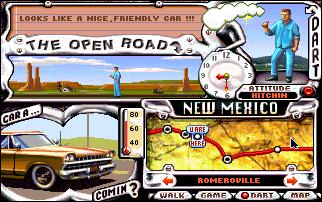Salient is a cancelled action-adventure game that was published by Disney Interactive and developed by Propaganda Games for the Xbox 360 and Playstation 3, around 2005-2006.
Few details are known about Salient, as it seems to this day that this project never reached the prototype phase, let alone playable state. The existence of this title was shared on the personal website of Nathan Cheever, who served as a Level Designer at Propaganda Games from 2005 to 2007, although it is indicated that he never worked on Salient:
When Propaganda Games’ formed in 2005, the project after Turok was going to be Salient, a futuristic game that deals with humanity and injustice. The owners of the studio (Disney) put the project on hold indefinitely a year later, despite the team’s seasoned experience, passion, and talent.
Salient was set in the far future after humanity suffered for centuries of conflicts and global warming. The action take place in a futuristic metropolis that housed surviving masses from around the world, created by a big corporation that also created the Salients, a robotic workforce exhibiting personality traits, emotions and human features, initially designed to serve humanity. But over the years, the Salients integrated throughout the society and become more and more powerful to a point where they took over the corporation and see the humanity as “obsolete”, seizing operations by placing human beings in ghettos. Gamers would have played the role of a hybrid between a human and a Salient, hunted by the corporation and rejected by humans. In his quest, he would eventually flee the metropolis and joined a group of other rejected Salients in the wasteland, before saving humanity.
The art and visual direction was inspired by futuristic science-fiction movies and space opera such as Star Wars, Matrix, Equilibrium and I, Robot, while the gameplay had some platformer elements mainly inspired by the Prince of Persia series and Role-Playing Game mechanics retained from games such as Mass Effect. It also seems that combats would have been similar to the Devil May Cry franchise.
In the end, Disney didn’t take the pitch, and the small team dedicated to Salient joined the one behind Turok as stated by Nathan Cheever:
It was the big main project they wanted to do. There was a small team working on it when they were folded into Turok to help production. Disney didn’t really want to do mature titles like Turok which probably contributed to some of the results.
During their existence, Propaganda Games had more cancelled projects that released ones. Alongside Salient, we can add the well known Turok 2 and Pirates of the Caribbean: Armada of the Damned, but also a mysterious prototype based on Marvel‘s Secret Wars, using the Unreal Engine and let’s not forget that even their Turok game released in 2008 had contents that were cut in the end.
Videos:



